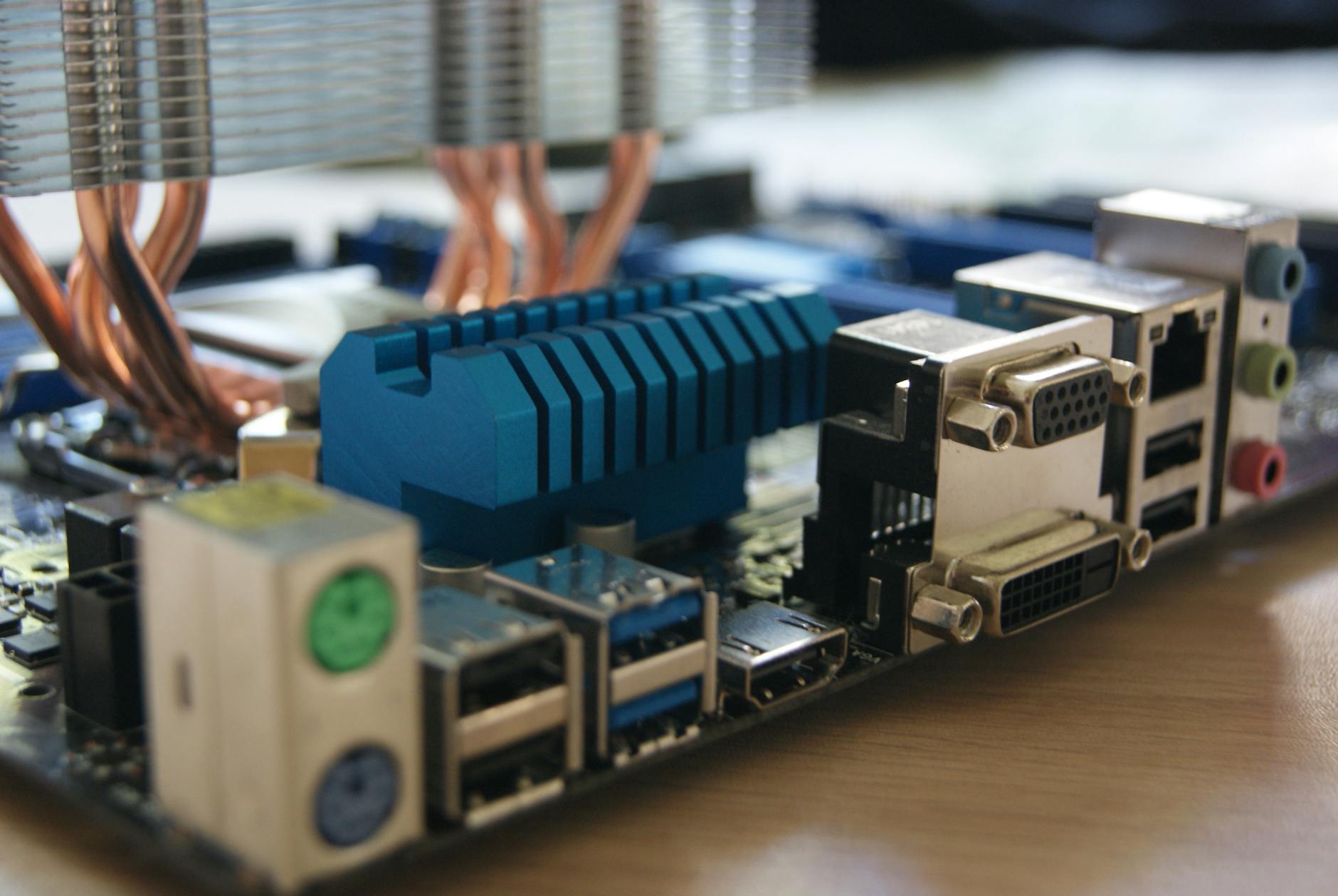5 Best KVM Switches

image source: Pexels
If you’ve ever worked with multiple computers at the same time, you know how annoying or frustrating it can get switching back and forth between displays, keyboard, and mouse devices. Some positions call for multi-tasking for various applications on different systems on a regular basis, but you just don’t have desktop space for multiple keyboards and displays.
KVM switches are the answer to that problem. KVM stands for “keyboard, video, mouse” and allows the use of these devices on multiple computers. So with one set off peripherals, you can move with ease from one computer to another.
KVM switches are offered by many manufacturers, with a broad array of features and configurations to meet your needs. These switches will save you money and desktop clutter, through the capabilities they provide in sharing devices not only for you, but among other computer users, as well.
No products found.
KVM Switch Types
KVM switches are available in several distinct categories:
Single-user KVM switch – small and inexpensive, these devices are typically utilized by an individual such as a technician or testing resource who needs to access multiple computers from a single site. You can access and manage as many devices and computers as supported by the KVM switch you install.
Multi-user KVM switch – when there are multiple users who need to access a number of computers, multi-user KVM switches will provide the functionality that allows technical teams, support personnel, or managers to access many computers or servers. These are more common in large technical environments and data centers.
Analog KVM switches – using older (but proven) technology, these switches connect via physical cables, using coax, Cat5, or other connections, depending on the switch design.
Digital KVM switches – with digital technology and internet access, digital switches utilize IP connections to allow communication and sharing through your local network (LAN) or via remote connection in a KVM-over-IP configuration.
5 Best KVM Switches
Certainly what you consider “best” will be the one that most cost-effectively and reliably suits your individual requirements, but these contenders will provide some guidelines for KVM switches that have features and quality that you can count on.
IOGEAR 4-Port DVI KVMP GCS1104
No products found.
5/5 Stars
Features:
- Plug-and-play installation
- LED display for easy monitoring of device status
- Auto Scan Mode continuously monitors all computers
- Microphone and 2.1 stereo audio support
- Switch from one computer to another without disrupting print jobs or file downloads
Amazon price: $150.69
Our rating – 5 stars – loaded with connectivity options
Customer reviews:
- “This works exceptionally well. After my experience with analog KVMs I was gritting my teeth and hoping this would work at least well enough to be usable. Instead I find it works like a dream, at least for keyboard, video, and monitor. I don’t use the audio feature so I cannot review it. I’d rashly presume it was good given the quality of the rest of the box. It performs beyond it’s price range. The only reason to dock it any points would be that there is no reason to dock any points. Got it? I love it.”
- “I have only had this setup for one day now, but it is working flawlessly with four systems. The default hot-key switching is easy to use, as are the front panel selector buttons as well. This is by far the most affordable, and feature rich, DVI/USB KVM at this price point! I have been waiting to replace my aging VGA/PS2 IOGEAR mini view GCS614A KVM (which still works great!) for a while now, and this one works great! I’m glad I finally made the purchase,”
Vertiv Avocent 2-Port DisplayPort 4K Ultra HD SV220D
No products found.
3.5/5 Stars
Features:
- 2-Ports for controlling 2 computers from a single keyboard, display, and mouse
- High-definition video and quality audio
- Zero delay switching between computers
- Easy cut-and-paste text between computers
Amazon price: $289.99
Our rating – 3.5 stars – solid product, but limited port capability
Customer reviews:
- “This is a “first impression” of this KVM as I just got it going.I have simple needs – I just want to wanted to switch between several cpu’s with dual 4K screens (43″ LG and 43″ Dell). The dual view.dual link DVI GSC1644 from Iogear, while a great tool, just didn’t make the leap to 4K UHD.The good is it just worked fine out of the box with good quality HDMI cables. I haven’t tried either USB or audio switching as I manage them independently – I just wanted a KVM to allow dual screen and a single keyboard and mouse. While I bought good quality HDMI cables, I had to rummage for the USB A to B cables, so plan for these as well if you want an easy set-up. I’ll use the HDMI audio when I don’t want to use headphones while watching movies.The bad, especially for gamers, is it is limited to 30 Hz – the more expensive Display Port version claims it will do 60 Hz. Being HDMI, sound can be directed through monitor speakers or to anything you want, (Windows 10). I did force it to 60Hz for one monitor and it was not happy. It’s fine for my needs at 30 Hz, but that’s the several hundred dollar difference in models.”
- “This is a well-built KVM switch, in metal case (front panel is plastic). Switch time is about 1 sec among the same resolution, and close to 2 sec from (2K) HDTV to 4K UHDTV and back, possibly with some portion not caused by the KVM, but my screen renegotiating the resolution.While the specification lists 4K UHDTV (3480×2160) at 30 fps (which works unrestricted up to 8 bit RGB), past reviews vaguely hints on the possibility of 60 fps, which in fact does work – with the caveat that the signal must be HDMI 1.4:”
ConnectPRO UD-14+KIT 4-Port KVM
No products found.
5/5 Stars
Features:
- Maximum video resolution of 2560×1600 on two monitors concurrently.
- All-time Full DDC for EDID communications
- Share speakers among computers with audio ports
- All-metal durable chassis for reliability
Amazon price: $289.00
Our rating – 5 stars – high-performance and versatility
Customer reviews:
- “I couldn’t be happier with this thing. It does its job excellently, it’s a reasonable size, it’s a very reasonable price, the cables are robust and definitely are not going to break any time soon, it doesn’t get too hot even after running for several days (which is to be expected since these things are intended to run in server rooms), the DDM and keyboard macros are super convenient and went above and beyond my expectations, even the face buttons, which look like they might get dislocated if you hit them at the wrong angle, are surprisingly stable and robust, going in perfectly straight no matter where my finger is when I press them. And a cool bonus is that if even one of the connected machines are powered on and connected, the KVM switch powers on. You can run it without ever plugging in the A/C adapter.”
- “Lightning fast! The DDM feature is amazing. ZERO latency. I seriously cannot stand the wait of traditional KVM’s while they switch my mouse and keyboard over and this has none of that. Work wouldn’t pay for this. Bought it myself. WELL worth the money.”
Rosewill 2-Port USB RKV-1UC
No products found.
3.5/5 Stars
Features:
- Very affordable – KVM switching on a budget
- Supports multiple OS including Windows, Mac, and Sun
- Handles high-resolution displays
- Easy switching among computers
Amazon price: $16.99
Our rating – 3.5 stars – works well for its intended base, but very limited function
Customer reviews:
- “Works as it should. Button is a little flimsy, and came apart while installing, but snapped back together. Great product for the price. I would recommend.”
- “I know I could remote into a server I have next to my desk, but it’s rather annoying to do so. I say that because if the internet is down, I have to try locally, also, if there is a problem and I need to work on it directly, this fixes the problem. All in all, great switch, better than others I have used in the past.”
Tripp Lite B006-VU4-R 4-Port Switch
No products found.
4.5/5 Stars
Features:
- Ease of connectivity and switching between computers (hotkey or pushbuttons)
- Auto Scan Mode to monitor computers without switching to them
- Compatible with major operating systems
- Heavy-duty steel housing
Amazon price: $62.86
Our rating – 4.5 stars – good performer, sturdy construction, reliable vendor
Customer reviews:
- “I received this 4-Port KVM switch yesterday and now it’s up and running perfectly. There was one question I had before ordering from Amazon. Did not find a good answer in reviews. Will it work with a wireless keyboard/mouse connection? My answer is yes, with an older Logitech EX 110 wireless keyboard and mouse, when connected to the console keyboard input.”
- “I was tired of cheaper products that sometimes work, if you do this and that. My confidence in Tripp Lite told me this would work without hassle, and it does.”
How to Pick the Best KVM Switch for You
Several factors go into the purchase decision when it comes to selecting your KVM switch:
Power Supply – KVM switches may contain their own internal power supply, or be powered by the computer they’re connected to. Those with internal power supplies typically are more reliable and capable of switching among computers more quickly and seamlessly.
Compatibility – not all KVM switches are compatible with every operating system. Some are designed specifically for Windows, others for Mac, and still others can manage both without hesitation. Be sure the KVM switch you purchase meets the needs of all users and systems that will interact with it.
This includes not only operating systems, but also peripherals such as keyboard and mouse interfaces, video interfaces such as VGA and HDMI, and attached equipment such as USB storage drives.
Capacity – select the switch that will handle the number of computers and peripherals you expect to manage with it. Once you have the switch in place, you will likely find additional users and devices you would like to connect. Plan accordingly with buying the KVM switch with the number of ports that allows for future growth.
Performance – lower-quality KVM switches can impact the display resolution and image quality on your displays. Be sure the switch you select has the performance and quality to provide clear monitor images to avoid pixelated or grainy appearance.
Support – this is critical for nearly every technical device from computer to application software. Always check your prospective vendor for support availability and method (online chat, phone, email).
As technology has advanced over the years, manufacturers have kept pace in providing the best KVM switches with advanced functionality and communications capabilities.
Implementing a KVM switch makes controlling computers and peripheral devices much easier, and sharing devices among KVM-attached users can save a significant amount of time and money. Making your choice for the best KVM switch that’s right for you can take some thought, but the rewards will be worth your time and effort.









